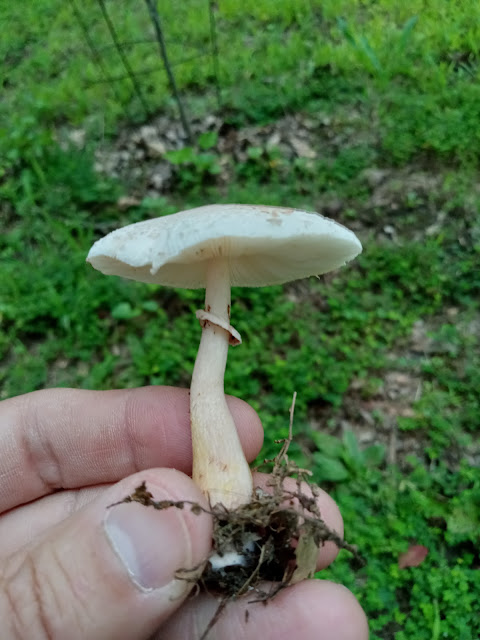The current Latin binomial for this mushroom is Leucoagaricus americanus, but many might know it better as Lepiota americana. This is a mushroom that begins showing up mid-summer. The cap can be from 3-15 cm wide, and the stalk is 7-14 cm, but these were a bit shorter than that. It grows in lawns and wood chips. These two were likely growing from the dead roots of a Bur Oak (Quercus macrocarpa). The gills are close and white, and are free from the stem. They quickly bruise yellow and then red (see last photo). It's a dry mushroom with red-brown scales on the cap. The stalk, which has an annulus, is smooth and firm and bulbous toward the base, but there is no volva, as one sees with Amanitas. This is an important detail to look for. The spore print is white.
This mushroom is edible, but it's not great, and I don't recommend it since there are several poisonous mushrooms that somewhat resemble this one, including Amanita rubescens, Amanita thiersii, and Chlorophyllum molybdites.
A few key features to look for: the red or brown center on the cap, which is often a bump. the swollen pear-shaped base of the stem, and the bruising yellow then red.




